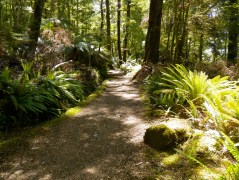Long distance trail runners riot when New Balance releases new minimalist trail running shoe! Can any of you runners imagine a headline like this? Not very likely. Runner riots are pretty rare. But a riot did happen this week when Nike released a limited quantity of a new basketball shoe. This is an actual headline from USA Today:
Footlocker halts events after riot over Nike Sneaker.

While no riot occurred, New Balance did release a new minimalist trail running shoe recently. The MT110. I’m a big proponent of lightweight trail running shoes from New Balance having owned 8 or 9 pairs of the 100s and more recently the 101s so am hoping for another great shoe in that line. For me, the 100s and 101s offered a comfortable, super lightweight shoe capable of running on or off road. The thin rock plate provided enough protection to prevent foot bruises while allowing enough toe box width and flexibility for long distance running. I have run races and training runs ranging from 5K to 60K without foot problems. A year or so ago, I was pretty excited when New Balance announced the release of the 10 minimalist shoe which was even more lightweight than the 101. Unfortunately, this shoe was disappointing to me. The sole was composed of clearly defined rubber pods spaced to allow flexibility. However, the spacing was enough to allow small stones to fit between them and without a rock plate, caused significant bruising of the ball of my foot while running on the rocky trails of Colorado. Because I was training for a trail ultra last year at about this time, I thought I’d try a more substantial (non-minimal) La Sportiva shoe. While the shoe was well built and looked great, it felt too heavy and constrictive after my time with the 101s. After all that experimentation, I went back to the New Balance Trail 101s and was happy again. I completed miles of distance training and the 60K ultra without foot problems.
With the release of the MT110s last month, I am hopeful that New Balance has come up with another winner. I have not yet tested this new shoe but others have. Here’s a review that I think is done very well. Have a look: New Balance 110 Review.



